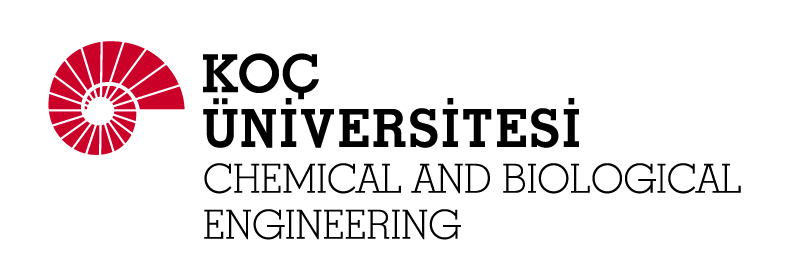CHEMICAL AND BIOLOGICAL PhD THESIS DEFENSE BY HAMED YOUSEFZADEH
Title: Synthesis of Copper-Exchanged Zeolites by Supercritical Ion Exchange for Production of Liquid Fuels
Speaker: Hamed Yousefzadeh
Time: August 12, 2022, 10:00 A.M
Place: online zoom meeting
https://www.google.com/url?q=https://kocun.zoom.us/j/98953702642&sa=D&source=calendar&ust=1659267802848485&usg=AOvVaw1KV5a0Kq8ZSUb7fKpnupF3
ID: 98953702642
Passcode: 570439
Thesis Committee Members:
Prof. Dr. Can Erkey (Advisor, Koç University)
Prof. Dr. Alper Uzun (Koç University)
Asst. Prof. Dr. Berat Haznedaroğlu (Boğaziçi University)
Asst. Prof. Dr. Erdal Uzunlar (İzmir Institute of Technology)
Asst. Prof. Dr. Zeynep Ülker Demir (Altınbaş University)
Abstract:
A new technique termed Supercritical Ion Exchange (SCIE) was developed and used to synthesize Cu-mordenite (Cu-MORS). The ion exchange takes place between the Cu complex (Copper(II)trifluoroacetylacetonate) dissolved in supercritical CO2 (scCO2) and the extraframework protons in zeolite without requiring an aqueous phase. The occurrence of the ion exchange reaction was demonstrated by using 1H NMR analysis of the high-pressure fluid phase samples and by visual inspection of the fluid phase color change during the synthesis. SCIE resulted in selective ion-exchange inferred by the equilibrium isotherm. The other zeolite frameworks such as ZSM-5 and SSZ-13 were successfully used in SCIE to synthesize copper exchanged zeolites.
As the first application, the stepwise direct methane to methanol (sDMTM) over Cu-MORS was investigated. The results showed that methanol productivity increased linearly with increasing Cu loading up to a certain Cu wt%. Cu-MORS displayed 16% higher methanol productivity as compared to Cu-MORA (prepared by aqueous ion exchange) with the same Cu loading, demonstrating the importance of site selective ion-exchange for zeolite catalysis. Increasing the oxygen activation temperature and methane reaction time enhances the methanol productivity of Cu-MORS. The reducibility of Cu-MORS was compared with those of Cu-MORA prepared by aqueous ion exchange (AIE) using H2-TPR. It was demonstrated for the first time that deconvoluted H2-TPR profile coupled with effects of Cu loading and oxygen activation temperature on methanol productivity data can be used to distinguish the active Cu sites from inactive ones based on their reduction temperature. The copper sites responsible for methane activation were found to be reduced below 150 °C by H2 in both Cu-MORS and Cu-MORA. From the stoichiometry of the reaction of H2 with Cu2+ species, the average number of copper atoms of active sites were calculated as 2.07 and 2.80 for Cu-MORS and Cu-MORA, respectively. Differences in structure of copper species caused by the synthesis routes were also detected by in-situ FTIR upon NO adsorption indicating a higher susceptibility of Cu-MORS towards autoreduction. The results demonstrated the potential of TPR based methods to identify copper active sites and suggested the importance of site selective ion exchange in order to controllably synthesize active Cu species in zeolites.
Catalytic hydrothermal liquefaction of microalgae was the second application of Cu-exchanged zeolites as the catalysts prepared by SCIE. Two different microalgae, C.nivalis and N.gaditana, were cultivated in a pilot scale open ponds. The harvested wet biomass was converted to bio-crude by hydrothermal liquefaction (HTL) with/without catalyst. C.nivalis is known as snow algae grown in cold environments was used for this process for the first time in the literature. Catalytic HTL experiments were performed by introduction of Cu-MOR, Cu-ZSM-5, and Cu-SSZ13, synthesized by SCIE using scCO2. The composition of all bio-crudes was analyzed by elemental analyzer and GC-MS methods. First, the effect of different operating conditions on the yields of the products and the bio-crude composition was determined for non-catalytic process. Temperature, duration, and dry content of the feed were the process parameters exploited in the ranges of 250-350 ºC, 10-60 min, and 5-20 wt%, respectively. For C.nivalis, 300 ºC, 60 min, and dry content of 20 wt% were the optimum conditions led to maximum bio-crude yield of 18.8 wt%, while 300 ºC, 30 min, and dry content of 10 wt% were the optimum ones for N.gaditana at which the maximum bio-crude yield of 34 wt% was observed. Bio-crude yield of N.gaditana was improved using Cu-MOR, while using catalysts for the case of C,Nivalis resulted in more gasification with no positive effect on bio-crude yield. Moreover, elemental analysis showed that the fraction of nitrogen and oxygen in biocrude decreased in catalytic HTL runs, which was in line with GC-MS results showing that the concentration of hydrocarbons and cyclic compounds increased in presence of catalysts accompanied by a decrease in concentration of nitrogenous compounds.
